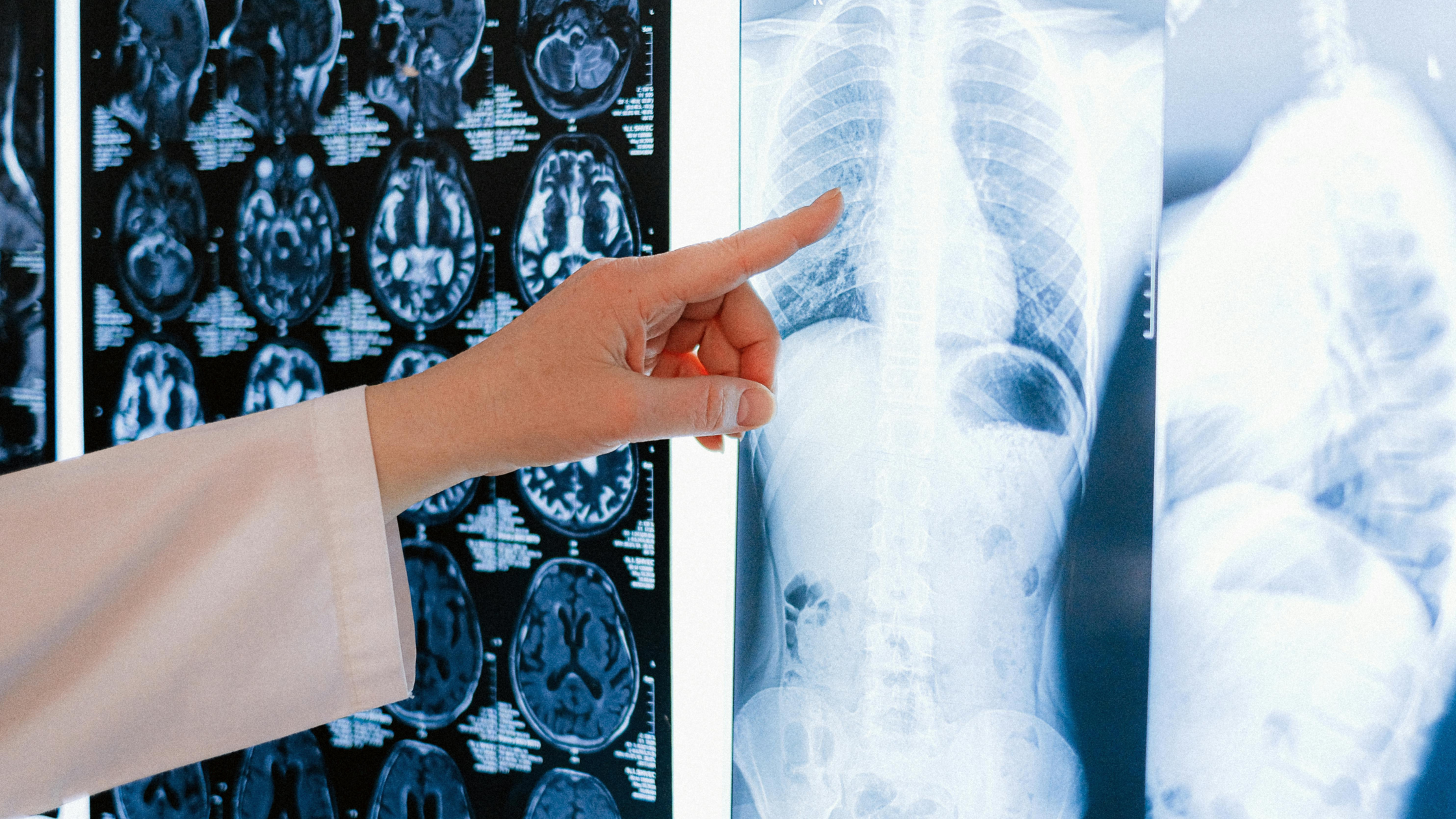The Hidden Power of Neuroplasticity
THE UPSHOT
Neuroplasticity is your brain’s ability to rewire, grow, and adapt at any age. We form habits by repeatedly strengthening certain neural pathways, and we are most capable of change when faced with novelty and challenge in a safe environment. Fear and chronic stress shut down plasticity, while supportive conditions, like nourishing foods, movement, sleep, mindfulness, active learning, and balanced hormones, help the brain stay flexible. With the right mix of challenge and calm, you are never too old to change.
For a long time, science told us that our brains were fixed once we reached adulthood. The idea was that neurons only died off over time and that learning new behaviors and changing long-held habits was difficult, if not nearly impossible, to do.
But modern neuroscience has rewritten that story. We now know about neuroplasticity, the remarkable ability of the brain to rewire, grow, and adapt at any age. And this is more than theory; it’s the foundation of why lifelong growth, healing, and transformation are possible for every one of us.
How Neuroplasticity Works
At its core, neuroplasticity is the brain’s capacity to form and reorganize connections between neurons in response to experience (1). When you learn something new, practice a skill, or even shift your mindset, you strengthen certain neural pathways while weakening others. This happens through processes called long-term potentiation (where repeated activation of a neural pathway makes it stronger and more efficient) and long-term depression (where unused connections weaken and fade). Over time, these patterns shape how you think, feel, and behave (2).

Habits and the Conditions for Change
One of the most fascinating truths about neuroplasticity is that change happens most readily when we are in a state of novelty, meaning when life demands that we adapt. Think about times you’ve started a new job, traveled to a foreign country, or moved to a different home. Suddenly, even simple daily tasks require more focus and attention. This heightened state of awareness actually primes the brain to release neuromodulators like dopamine, which tag experiences as important and help strengthen the new wiring. This is why many people report breakthroughs or fresh perspectives when they step outside their usual routine (3).
On the flip side, fear shuts down plasticity. When the nervous system is locked into survival mode, stress hormones like cortisol rise, reducing hippocampal function and making it harder to form new memories.
The brain prioritizes immediate safety over exploration. This is why cultivating a safe, supportive environment is essential for change. We can’t grow if our brains feel under siege. Reiki, meditation, breathwork, and grounding nutrition all help bring the nervous system back into balance, creating the conditions where new wiring can take hold.
Lifestyle and Neuroplasticity
The brain is not separate from the body, it’s nourished, shaped, and protected by how we live. Several lifestyle factors directly enhance neuroplasticity.
Nourishment
It’s crucial to nourish your brain. Plant-based diets rich in antioxidants (berries, leafy greens, cacao), polyphenols (green tea, turmeric, olive oil), and omega-3 fatty acids (chia seeds, flax, walnuts) support the production of brain-derived neurotrophic factor (BDNF), a protein that plays a significant role in brain development. BDNF encourages neurons to grow, form new synapses, and repair themselves. Deficiencies in BDNF are linked to depression and cognitive decline (4).
Intentional Movement
Movement, especially aerobic exercise, boosts blood flow to the brain, delivering oxygen and glucose that neurons need to function. Exercise also stimulates BDNF and promotes neurogenesis (the growth of new brain cells), particularly in the hippocampus, the region critical for memory and learning (5).
Restorative Rest
Deep, restorative sleep consolidates new learning by replaying neural activity patterns from the day. During sleep, the brain clears metabolic waste through the glymphatic system, creating space for new wiring to take root.
Mindfulness and Meditation
Studies using fMRI have shown that regular meditation increases gray matter density in the prefrontal cortex and hippocampus, which are regions associated with focus, compassion, and memory (6). These practices calm the nervous system while actively reshaping brain structure.

Hormones and Neuroplasticity
Hormones are another key driver of brain flexibility. They act as biochemical messengers that can open or close windows of plasticity at every life stage.
Estrogen: Estrogen enhances synaptic plasticity by increasing dendritic spine density (tiny protrusions on neurons where synapses form) (7). This means more opportunities for connection, learning, and memory. During perimenopause and menopause, when estrogen levels decline, many people notice shifts in cognitive function, memory, and even handedness. Fascinating research suggests that reduced estrogen can rebalance hemispheric activity, making some women who were strongly right-handed more ambidextrous (8).
Progesterone: This hormone has neuroprotective properties, supporting the survival of new neurons. Its fluctuations during the menstrual cycle can influence mood, memory, and focus, demonstrating how intimately tied brain function is to hormonal balance.
Cortisol: In short bursts, cortisol (the stress hormone) can heighten alertness and help us learn from challenges. But chronic elevation reduces BDNF, shrinks the hippocampus, and impairs neurogenesis. This is why unrelenting stress narrows our ability to grow and why constant fear freezes brain plasticity.
Oxytocin: Known as the “bonding hormone,” oxytocin enhances social learning and resilience. Environments rich in connection and trust stimulate oxytocin release, supporting neuroplasticity at both the emotional and cellular levels.
Neuroplasticity teaches us that we are never stuck. At any age, under the right conditions, the brain can adapt, grow, and form new pathways.
Creating those conditions requires both challenge and safety: enough novelty to spark new wiring, and enough of a calm nervous system to make change sustainable. With nourishing foods, daily self-care practices, supportive environments, and an understanding of how our hormones shape cognition, we can continue to evolve in mind, body, and spirit at every life stage.
xo – Serena
FAQ
Q: Can neuroplasticity explain why learning a language is easier when you’re young?
A: Yes. During childhood and adolescence, the brain has heightened “critical periods” of plasticity where language pathways are especially receptive. As adults, plasticity doesn’t vanish but it requires more repetition, motivation, and enriched environments to create the same depth of wiring.
Q: Does technology affect our neuroplasticity?
A: Digital tools do change the brain, sometimes positively (enhancing multitasking or visual-spatial skills) and sometimes negatively (reducing attention span through constant distraction). The key is intentional use, such as choosing tech habits that stimulate rather than scatter focus.
Q: Can psychedelics or plant medicines influence neuroplasticity?
A: Emerging research shows that compounds like psilocybin and ayahuasca may temporarily increase plasticity by boosting dendritic growth and synaptic connections. This is one reason they are being studied for depression and trauma therapy, though more research is needed.
Q: How long does it take to “rewire” a habit?
A: While popular culture says 21 days, neuroscience research suggests it usually takes 6 to 8 weeks of consistent practice to lay down durable new pathways, and longer for deeply ingrained behaviors. The process is gradual but cumulative.
Q: Does neuroplasticity decline with age?
A: Plasticity slows but never disappears. Aging brains require more stimulation like novelty, learning, and physical activity to maintain the same level of rewiring seen in younger adults. Think of it like keeping a muscle strong: the more you use it, the more flexible it stays.
CITATIONS
- Marzola P, Melzer T, Pavesi E, Gil-Mohapel J, Brocardo PS. Exploring the Role of Neuroplasticity in Development, Aging, and Neurodegeneration. Brain Sci. 2023 Nov 21;13(12):1610. doi: 10.3390/brainsci13121610. PMID: 38137058; PMCID: PMC10741468.
- Bliss TV, Cooke SF. Long-term potentiation and long-term depression: a clinical perspective. Clinics (Sao Paulo). 2011;66 Suppl 1(Suppl 1):3-17. doi: 10.1590/s1807-59322011001300002. PMID: 21779718; PMCID: PMC3118435.
- Blumenfeld H. Brain Mechanisms of Conscious Awareness: Detect, Pulse, Switch, and Wave. Neuroscientist. 2023 Feb;29(1):9-18. doi: 10.1177/10738584211049378. Epub 2021 Oct 11. PMID: 34632846; PMCID: PMC8995398.
- Román GC, Jackson RE, Gadhia R, Román AN, Reis J. Mediterranean diet: The role of long-chain ω-3 fatty acids in fish; polyphenols in fruits, vegetables, cereals, coffee, tea, cacao and wine; probiotics and vitamins in prevention of stroke, age-related cognitive decline, and Alzheimer disease. Rev Neurol (Paris). 2019 Dec;175(10):724-741. doi: 10.1016/j.neurol.2019.08.005. Epub 2019 Sep 11. PMID: 31521398.
- Ferrer-Uris B, Ramos MA, Busquets A, Angulo-Barroso R. Can exercise shape your brain? A review of aerobic exercise effects on cognitive function and neuro-physiological underpinning mechanisms. AIMS Neurosci. 2022 Apr 2;9(2):150-174. doi: 10.3934/Neuroscience.2022009. PMID: 35860684; PMCID: PMC9256523.
- Rathore M, Verma M, Nirwan M, Trivedi S, Pai V. Functional Connectivity of Prefrontal Cortex in Various Meditation Techniques – A Mini-Review. Int J Yoga. 2022 Sep-Dec;15(3):187-194. doi: 10.4103/ijoy.ijoy_88_22. Epub 2023 Jan 16. PMID: 36949839; PMCID: PMC10026337.
- Smith CC, Vedder LC, McMahon LL. Estradiol and the relationship between dendritic spines, NR2B containing NMDA receptors, and the magnitude of long-term potentiation at hippocampal CA3-CA1 synapses. Psychoneuroendocrinology. 2009 Dec;34 Suppl 1:S130-42. doi:10.1016/j.psyneuen.2009.06.003. PMID: 19596521; PMCID: PMC2796081.
- Camon C, Garratt M, Correa SM. Exploring the effects of estrogen deficiency and aging on organismal homeostasis during menopause. Nat Aging. 2024 Dec;4(12):1731-1744. doi: 10.1038/s43587-024-00767-0. Epub 2024 Dec 13. PMID: 39672893; PMCID: PMC11785355.
by





